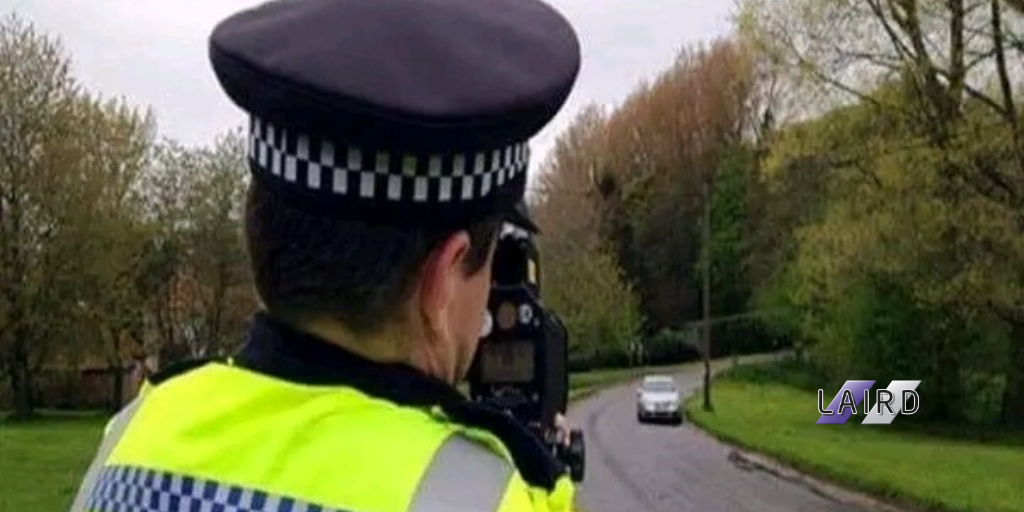When the UK introduced its national speed limit of 70 mph in 1967, it was a groundbreaking move aimed at improving road safety. At that time, the average family car had modest power, rudimentary braking systems, and minimal safety features. Fast forward to today, and the automotive landscape has dramatically transformed, making many of the rules established over half a century ago increasingly outdated.
The Evolution of Car Technology
Since 1967, cars have undergone a significant evolution, particularly in terms of braking distances and safety features. Since the Nineties vehicles have been equipped with advanced braking systems like anti-lock brakes (ABS), air bags and electronic stability control (ESC). These technologies allow cars to stop more quickly and maintain better control in emergency situations, drastically reducing braking distances compared to the vehicles of the past.
Additionally, safety features such as airbags, crumple zones, and in the last few years, Advanced Driver Assistance Systems (ADAS) such as lane departure warnings, autonomous braking, and adaptive cruise control have become standard in most cars. These innovations not only protect occupants in the event of a crash but also help prevent accidents from occurring in the first place. The difference between a car from 1967 and one from 2024 is like night and day, yet the speed limits remain unchanged.
Why the existing Speed Limit is Outdated
The current speed limit was set at a time when cars lacked the advanced safety mechanisms and braking capabilities that we now take for granted. In 1968, a car traveling at 70 mph required much more distance to come to a stop than a modern vehicle does today. The outdated speed limits do not reflect the improved safety and handling of contemporary cars, leading to a mismatch between legal restrictions and technological capabilities.
As cars have become more sophisticated, the argument for revisiting speed limits grows stronger. Modern vehicles are not only safer at higher speeds but also more stable and responsive. Sticking rigidly to a 70 mph limit fails to take into account the technological strides made in vehicle safety and efficiency.
The Highway Code suggests a stopping distance of 315 feet (96 meters) when traveling at 70 mph. This distance includes both the thinking distance (the time it takes for a driver to react and begin braking) and the braking distance (the distance the car travels after the brakes are applied).
 For an average 2024 car equipped with modern braking systems such as anti-lock brakes (ABS) and electronic stability control (ESC), the braking distance can be significantly shorter. On average, a 2024 car might have a braking distance of around 190 to 200 feet (58 to 61 meters) at 70 mph, depending on factors such as tire condition, road surface, and vehicle type. This suggests that the total stopping distance, including the thinking distance, could be as low as 245 to 255 feet (75 to 78 meters), which is notably shorter than the 315 feet recommended by the Highway Code.
For an average 2024 car equipped with modern braking systems such as anti-lock brakes (ABS) and electronic stability control (ESC), the braking distance can be significantly shorter. On average, a 2024 car might have a braking distance of around 190 to 200 feet (58 to 61 meters) at 70 mph, depending on factors such as tire condition, road surface, and vehicle type. This suggests that the total stopping distance, including the thinking distance, could be as low as 245 to 255 feet (75 to 78 meters), which is notably shorter than the 315 feet recommended by the Highway Code.
As an example a 2022 Lamborghini Huracan can stop from 70 mph in 135 feet, less than half the Highway Code’s suggested distance.
The Case for a Tiered Driving Licence System
One way to address the disparity between outdated speed limits and modern vehicle capabilities is by introducing a tiered driving licence system, similar to Australia’s “super-car” licence. Under this system, drivers who own or operate higher performance vehicles would need to undergo additional training and testing to earn a special licence that allows them to drive at higher speeds.
This approach would offer several advantages. First, it acknowledges that not all vehicles are created equal—what is safe in a high-performance sports car may not be safe in an older or less capable vehicle. Second, it ensures that only those drivers who have demonstrated a higher level of skill and understanding of their vehicle’s capabilities are permitted to drive at increased speeds. This system could lead to safer roads by ensuring that those who are driving faster are equipped to handle the demands of high-speed travel.
Why haven’t these limits been updated?
So why haven’t these limits been updated to match the capabilities of today’s safer vehicles? Some speculate that the answer may lie not in safety concerns, but in the potential financial benefits to authorities.
The Financial Incentive: Fines and Revenue Generation
One theory suggests that the reluctance to raise speed limits is partly driven by the substantial revenue generated from speeding fines. In the UK, fines from speeding offences contribute significant sums to the government. In 2020 alone, over 2 million speeding tickets were issued, resulting in millions of pounds in fines. Carwow’s recent survey suggested £391million from speed cameras alone in the last five years.
By maintaining speed limits that many drivers find difficult to adhere to, especially on long stretches of motorway, authorities can continue to issue fines at a consistent rate. Critics argue that this creates a financial incentive for keeping speed limits low, as increasing them could potentially reduce the number of fines issued, thereby cutting off a lucrative revenue stream.
Safety Concerns: A Convenient Justification?
While the financial benefits of maintaining current speed limits are evident, authorities often justify their stance by citing safety concerns. It is true that higher speeds can increase the severity of accidents yet there has been no move to create more advanced training. It is accepted that road conditions, weather, and driver behaviour all play crucial roles in road safety. However, the fact remains that today’s vehicles are far more capable of handling higher speeds safely than those built in the Sixties when this limit was set and presumably considered safe and reasonable.
Modern cars are designed with advanced aerodynamics, better braking systems, and improved handling, all of which make driving at higher speeds safer than it was decades ago. Moreover, many highways are now better maintained and feature multiple lanes, reducing the likelihood of accidents even at higher speeds. Despite these advancements, the narrative of safety is frequently used to justify the status quo.
The Call for a Reassessment
There is a growing call for a reassessment of current speed limits, particularly on motorways and other major roads. Proponents argue that a more nuanced approach could be taken, where speed limits are adjusted based on road conditions, vehicle capabilities, and traffic patterns. For instance, a tiered speed limit system could allow vehicles with advanced safety features to travel at higher speeds, while older or less capable vehicles adhere to lower limits.
Additionally, there is a push for greater transparency regarding the financial aspects of speeding fines. If speed limits are indeed being kept low primarily for revenue generation, this could undermine public trust in traffic enforcement as a tool for safety rather than a means of raising funds.
Balancing Safety and Modern Realities
The question of why speed limits haven’t increased for nearly sixty years despite significant advancement in vehicle safety is complex. While safety is the official justification, the potential financial motivations cannot be ignored. As vehicle technology continues to advance, there is a strong argument for revisiting and potentially updating speed limits to reflect modern capabilities, ensuring that they serve their true purpose: to keep roads safe, rather than simply filling government coffers.
A balanced approach, considering both safety and fairness, could help rebuild public trust and ensure that speed limits are set at levels that make sense for today’s drivers and vehicles.
Embracing the Future of Driving
It’s clear that the driving environment of 1967 is vastly different from that of today. The cars on our roads are more powerful, more efficient, and significantly safer. As such, it’s time for the UK’s motorway speed limits to evolve in line with these advancements. A tiered driving licence system, along with a reassessment of speed limits, could be the key to creating a safer and more efficient driving environment that reflects the capabilities of modern vehicles.
By updating our speed limits and introducing a tiered licence system, we can strike a balance between road safety and the realities of contemporary driving. It’s time to embrace the future of motoring and ensure our laws keep pace with the technology that powers it.

